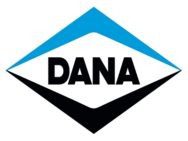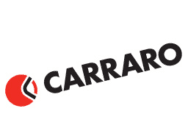Your vehicle’s torque converter plays a crucial role in transferring power from the engine to the transmission in automatic vehicles. When it begins to fail, various warning signs can alert you to potential problems before they escalate into costly repairs. Let’s explore how to identify torque converter issues, understand their impact, and know when to seek professional assistance.
Understanding Your Torque Converter
Before diving into symptoms, it’s important to understand what the torque converter actually does. Think of it as the mediator between your engine and transmission. Unlike manual transmissions that use a clutch, automatic transmissions rely on hydraulic fluid and the torque converter to transmit power. The torque converter consists of an impeller (connected to the engine), a turbine (connected to the transmission), and a stator that multiplies torque when needed.
Common Signs of Torque Converter Problems
1. Unusual Shuddering or Vibrations
One of the most noticeable signs of torque converter issues is a shuddering sensation that typically occurs between 30-45 mph. This feels similar to driving over rough road, except it happens even on smooth pavement. This shuddering occurs because the torque converter’s lock-up clutch is slipping, causing inconsistent power transfer between the engine and transmission.
The sensation might come and go, making diagnosis challenging. Pay attention to whether these vibrations occur consistently at specific speeds or during particular driving conditions.
2. Transmission Slippage
When your torque converter begins failing, you might notice your transmission slipping – where your engine revs higher than normal without a corresponding increase in speed. This happens because the torque converter isn’t efficiently transferring power to the transmission.
You might observe your tachometer needle climbing while your speedometer barely moves. This inefficiency not only affects performance but also reduces fuel economy substantially.
3. Overheating Transmission
A malfunctioning torque converter can cause your transmission to overheat. The fluid inside the torque converter generates heat during normal operation, but a failing converter can produce excessive heat that breaks down transmission fluid and damages internal components.
If your temperature gauge shows higher-than-normal readings or you notice a burning smell coming from under the hood, your torque converter might be the culprit. Prolonged overheating can lead to catastrophic transmission failure if not addressed promptly.
4. Unusual Noises
Listen carefully for unusual sounds that might indicate torque converter problems:
- A “whirring” noise when the engine is running but the car is stationary
- Clicking or clunking sounds during gear shifts
- A continuous “humming” noise that changes pitch with vehicle speed
These sounds often originate from worn needle bearings, damaged fins, or contaminated transmission fluid within the torque converter.
5. Delayed or Rough Gear Engagement
When you shift from park to drive, a healthy vehicle should engage gear smoothly with minimal delay. A failing torque converter might cause a noticeable lag between shifting the selector and the transmission engaging. This delay creates that characteristic “clunk” when the transmission finally engages after several seconds.
This happens because the torque converter isn’t building proper pressure or transferring power efficiently, requiring more time to generate enough force to engage the transmission.
6. Illuminated Check Engine Light
Modern vehicles have sophisticated onboard diagnostics that can detect torque converter issues. If your check engine light illuminates, particularly alongside any of the symptoms mentioned above, have a professional scan for trouble codes.
Common torque converter-related codes include P0740 (Torque Converter Clutch Circuit Malfunction), P0741 (Torque Converter Clutch Circuit Performance), and P0742 (Torque Converter Clutch Circuit Stuck On).
When to Seek Professional Help
If you’re experiencing multiple symptoms described above, it’s advisable to have your vehicle inspected by qualified transmission specialists. Companies like K&L Clutch specialize in diagnosing and repairing torque converter issues with minimal downtime.
Early intervention can often prevent more extensive damage. A professional diagnosis might reveal that a simple fluid change or electronic adjustment could resolve the issue, saving you from a complete torque converter replacement.
The Importance of Proper Maintenance
Preventative maintenance remains the best defense against torque converter failures. Regular transmission fluid changes according to your manufacturer’s recommendations help extend the life of your torque converter by:
- Removing metal particles and contaminants that can damage internal components
- Maintaining proper hydraulic pressure for efficient operation
- Providing adequate cooling to prevent overheating
- Ensuring smooth operation of the lock-up clutch
K&L Clutch is your trusted partner
Identifying torque converter problems early can save substantial repair costs and prevent unexpected breakdowns. If you notice shuddering, slipping, unusual noises, or delayed engagement, consult with transmission experts who can provide accurate diagnosis and effective solutions.
Remember that K&L Clutch offers comprehensive torque converter services, from diagnosis to repair or replacement, with an extensive inventory of parts to minimize downtime. Their ability to perform on-site field service means you can get back to operation quickly, whether you’re managing a commercial fleet or maintaining a personal vehicle.
Don’t ignore the warning signs – addressing torque converter issues promptly helps ensure the longevity and reliability of your vehicle’s transmission system.
In the world of heavy machinery and commercial vehicles, efficiency and versatility are key. One technology that exemplifies these qualities is the Power Take-Off (PTO) system. At K&L Clutch, we’re passionate about power transmission, and we believe understanding PTO can help our customers make informed decisions about their equipment needs. In this article, we’ll explore how PTO works and why it’s such a crucial component in many industries.
What is Power Take-Off?
Power Take-Off, commonly abbreviated as PTO, is a mechanical system that allows the main engine of a vehicle or stationary power source to transmit power to additional equipment or machinery. It’s essentially a way to “take off” power from the primary engine and use it to operate other devices.
The Basic Principle of PTO
At its core, PTO works on a simple principle: it taps into the vehicle’s transmission or engine to divert some of the power being generated. This diverted power can then be used to run auxiliary equipment, such as hydraulic pumps, water pumps, generators, or specialized tools specific to various industries.
Components of a PTO System
A typical PTO system consists of several key components:
1. PTO Drive Gear: This gear is connected to the vehicle’s transmission or engine.
2. PTO Unit: The main body of the PTO, which houses the gears and bearings.
3. Output Shaft: This shaft transmits the power from the PTO unit to the auxiliary equipment.
4. Control Mechanism: Usually a lever or switch that engages or disengages the PTO.
How PTO Engages
When the PTO is engaged, here’s what typically happens:
1. The operator activates the PTO control.
2. The PTO clutch engages, connecting the PTO drive gear to the output shaft.
3. Power from the engine or transmission is transferred through the PTO unit.
4. The output shaft begins to rotate, providing power to the attached equipment.
Types of PTO Systems
There are several types of PTO systems, each suited to different applications:
1. Transmission-mounted PTO: This is the most common type, attached directly to the vehicle’s transmission.
2. Engine-mounted PTO: Connected directly to the engine’s crankshaft or timing gears.
3. Split-shaft PTO: Installed in the vehicle’s driveline, between the transmission and differential.
Applications of PTO
The versatility of PTO systems has made them indispensable in numerous industries:
– Agriculture: Powering implements like balers, sprayers, and seeders.
– Construction: Operating cement mixers, compressors, and hydraulic systems on excavators.
– Utilities: Running bucket lifts, augers, and winches on utility trucks.
– Transportation: Powering refrigeration units on reefer trucks or hydraulic systems on dump trucks.
– Emergency Services: Operating water pumps on fire engines or hydraulic rescue tools.
Benefits of PTO Systems
1. Efficiency: PTO eliminates the need for separate engines to power auxiliary equipment.
2. Cost-effectiveness: It reduces fuel consumption and maintenance costs associated with multiple engines.
3. Space-saving: PTO systems take up less space than additional engines or motors.
4. Versatility: A single vehicle can perform multiple functions with different PTO-driven attachments.
Considerations When Using PTO
While PTO systems offer numerous advantages, there are some important considerations:
1. Power Management: Engaging PTO reduces the power available for vehicle propulsion.
2. RPM Requirements: Many PTO systems require the engine to run at a specific RPM for optimal performance.
3. Safety: Proper training is crucial, as PTO systems can be dangerous if mishandled.
4. Maintenance: Regular inspections and maintenance are necessary to ensure smooth operation and longevity.
The Future of PTO Technology
As vehicle technology advances, so does PTO. We’re seeing trends towards:
– Electric PTOs: In line with the shift towards electric vehicles.
– Intelligent PTO Systems: With advanced controls and monitoring capabilities.
– Higher Efficiency: Continuous improvements in power transmission efficiency.
Power Take-Off systems have revolutionized how we utilize engine power across various industries. By understanding how PTO works, businesses can make informed decisions about their equipment needs and maximize efficiency. At K&L Clutch, we’re committed to providing top-quality PTO solutions and helping our customers harness the full potential of their machinery.
Whether you’re in agriculture, construction, transportation, or any industry that relies on powerful machinery, PTO systems offer a versatile and efficient way to multiply the capabilities of your vehicles and equipment. As technology continues to evolve, we can expect PTO systems to become even more integral to powering the work that drives our world forward.
The clutch is an essential mechanical device that acts as a link in systems that require the selective transmission of rotational motion from one component to another. This type of mechanism is most commonly found in motor vehicles where they act as the linkage between the transmission and the engine.
While automotive clutches are certainly the most known, they are not the only type of clutch used for specific purposes. Industrial clutches are quite common for industrial applications, serving the fundamental purpose of connecting and disconnecting power transmission for the transfer of rotational force.
However, in many ways, industrial clutches are different from their automotive counterparts, such as in their robust construction and ability to handle massive torque loads. Learn more about industrial clutches as we answer the questions “What is an industrial clutch?” and “How does an industrial clutch work?” below.
What is an Industrial Clutch?
An industrial clutch is a type of clutch used in various industrial applications, such as operating heavy machinery and facilitating the efficient transfer of power. Through their different functionalities, industrial clutches allow the machine or equipment to enjoy smoother start-ups, efficient speed changes, overload protection and synchronization with other machinery components.
The main difference between an industrial clutch and other clutch types is their design specifications. Generally, industrial clutches are designed to handle high torque loads, frequent engagements and demanding operating conditions within industrial settings. Given their intended application, they often feature robust construction using high-quality materials and come with advanced design features that enable them to withstand the harsh performance requirements of heavy machinery.
How Does An Industrial Clutch Work?
Industrial clutches typically consist of different industrial clutch parts, including the flywheel, pressure plate, clutch disc, clutch release bearing, clutch fork and actuation mechanisms. Within the mechanism itself, the flywheel directly connects to the drive shaft while the pressure plate and clutch disc are located between the flywheel and the driven shaft.
Within these mechanisms, one member is attached to the power unit (typically the engine), which then drives the other member to provide output power. In this case, when the clutch is engaged, the clutch disc presses against the flywheel and pressure plate to facilitate the transfer of power. Meanwhile, when the clutch is disengaged, it separates the entire mechanism from the flywheel and pressure plate to interrupt the transmission of power.
What are the Different Types of Industrial Clutches?
There are several types of industrial clutches, including the following:
- Friction Clutch: The most common type; they consist of friction discs and pressure plates that push the discs together and allow the transmission of torque.
- Electromagnetic Clutch: Uses magnetic forces to engage and disengage the clutch.
- Hydraulic Clutches: Engages and disengages the clutch through the action of hydraulic pressure.
- Pneumatic Clutches: Compressed air generates the needed pressure to engage and disengage the clutch.
- Centrifugal Clutches: This type of industrial clutch operates based on centrifugal force.
- Dog Clutches: Made up of teeth on both driving and driven components that mesh together when the clutch is engaged.
- Cone Clutches: As the name suggests, this type of industrial clutch has a conical shape, which allows for gradual engagement and disengagement.
- Tooth Clutches: Similar to dog clutches, tooth clutches have teeth on both driving and driven components, offering more precise timing and control.
Maintain Operational Efficiency with K&L Clutch
The industrial clutch performs a crucial role in allowing the seamless transfer of rotational force from one component to another within an equipment’s mechanism. Because of these integral functions, your machine’s industrial clutch must be maintained in excellent condition to ensure operational efficiency.
K&L Clutch is your partner in securing replacement parts for your machines. We supply industrial clutches and other mechanical components to keep your machines running and prevent significant operational downtime. We supply parts manufactured by some of the industry’s most notable brands and provide repair and installation services for all the parts we sell. For more assistance, or to learn more information, you are welcome to contact us here.
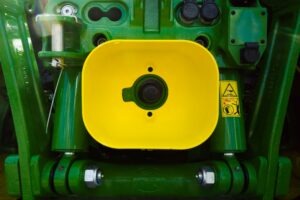 A power take-off is a gadget that transfers mechanical energy to another piece of equipment, allowing machines to function without needing an additional engine. Power take-offs are utilized in several applications but are commonly used in the agricultural and industrial sectors. From water pumps to farming tractors, a reliable power take-off kit can be installed in a wide range of equipment, allowing for improved performance and enhanced energy conservation.
A power take-off is a gadget that transfers mechanical energy to another piece of equipment, allowing machines to function without needing an additional engine. Power take-offs are utilized in several applications but are commonly used in the agricultural and industrial sectors. From water pumps to farming tractors, a reliable power take-off kit can be installed in a wide range of equipment, allowing for improved performance and enhanced energy conservation.
Read Full Article →
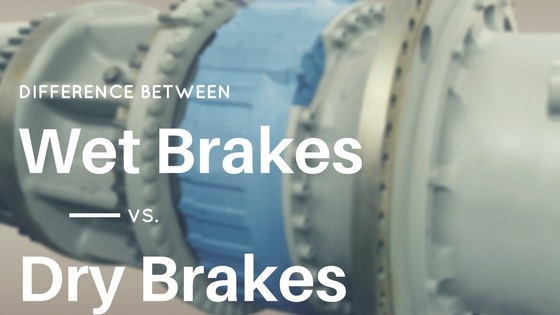
From a physics perspective, brakes on automobiles are built to convert kinetic energy (your moving vehicle) into heat energy (friction). In a car, for example, the car then stops because of the energy conversion.
Read Full Article →
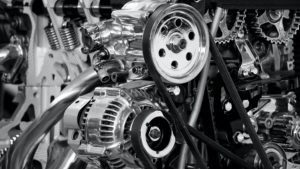 Your vehicle’s engines are subjected to extreme heat during use. To prevent your engine from overheating and to mitigate wear and tear, heat exchanger parts like an engine oil cooler can redirect the heat by circulating hot oil. When using quality parts, you can see the improvement in your engine’s reliability as your engine oil cooler is durable enough to take on the extreme heat your engine releases.
Your vehicle’s engines are subjected to extreme heat during use. To prevent your engine from overheating and to mitigate wear and tear, heat exchanger parts like an engine oil cooler can redirect the heat by circulating hot oil. When using quality parts, you can see the improvement in your engine’s reliability as your engine oil cooler is durable enough to take on the extreme heat your engine releases.
Read Full Article →
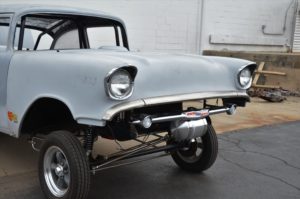 Car axles allow you to maximize your engine’s power and easily control your vehicle’s direction. K&L Clutch offers three brands of car axles that deliver the quality and durability that industrial drivers, heavy machinery operators and those with high-powered cars expect from their vehicles.
Car axles allow you to maximize your engine’s power and easily control your vehicle’s direction. K&L Clutch offers three brands of car axles that deliver the quality and durability that industrial drivers, heavy machinery operators and those with high-powered cars expect from their vehicles.
Read Full Article →
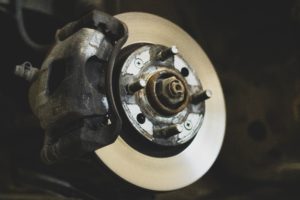
Heavy equipment requires high-performance braking systems that withstand extreme thermal loads. But, more importantly, they should keep the brakes running cool. Three types of braking systems can be used depending on the specific industrial machine.
Read Full Article →
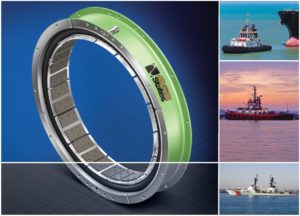
Have you ever asked yourself how marine crafts survive long cruises across oceans and seas? The marine environment is hazardous. All processes to go through smoothly, ensure that safety goes first by having quality clutches from one of the best manufacturing companies installed in your marine vessels and anchor spots.
Read Full Article →
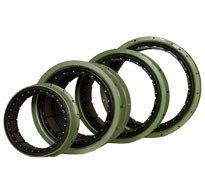
An industrial air clutch is a plate connected to a drive shaft of power machinery, and when engaged, it uses compressed air to slow down or stop the engine by disengaging it from what is driven. The industrial air clutch uses air instead of hydraulics or centrifugal forces to stop heavy machines.
Read Full Article →
Page 1 of 1112345...10...»Last »
 A power take-off is a gadget that transfers mechanical energy to another piece of equipment, allowing machines to function without needing an additional engine. Power take-offs are utilized in several applications but are commonly used in the agricultural and industrial sectors. From water pumps to farming tractors, a reliable power take-off kit can be installed in a wide range of equipment, allowing for improved performance and enhanced energy conservation.
A power take-off is a gadget that transfers mechanical energy to another piece of equipment, allowing machines to function without needing an additional engine. Power take-offs are utilized in several applications but are commonly used in the agricultural and industrial sectors. From water pumps to farming tractors, a reliable power take-off kit can be installed in a wide range of equipment, allowing for improved performance and enhanced energy conservation.
 Your vehicle’s engines are subjected to extreme heat during use. To prevent your engine from overheating and to mitigate wear and tear, heat exchanger parts like an engine oil cooler can redirect the heat by circulating hot oil. When using quality parts, you can see the improvement in your engine’s reliability as your engine oil cooler is durable enough to take on the extreme heat your engine releases.
Your vehicle’s engines are subjected to extreme heat during use. To prevent your engine from overheating and to mitigate wear and tear, heat exchanger parts like an engine oil cooler can redirect the heat by circulating hot oil. When using quality parts, you can see the improvement in your engine’s reliability as your engine oil cooler is durable enough to take on the extreme heat your engine releases. Car axles allow you to maximize your engine’s power and easily control your vehicle’s direction. K&L Clutch offers three brands of car axles that deliver the quality and durability that industrial drivers, heavy machinery operators and those with high-powered cars expect from their vehicles.
Car axles allow you to maximize your engine’s power and easily control your vehicle’s direction. K&L Clutch offers three brands of car axles that deliver the quality and durability that industrial drivers, heavy machinery operators and those with high-powered cars expect from their vehicles.


